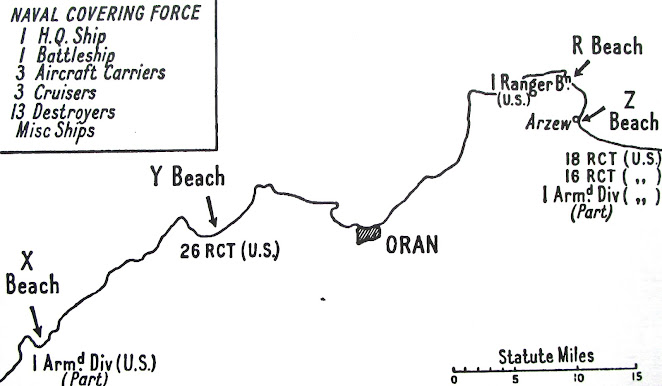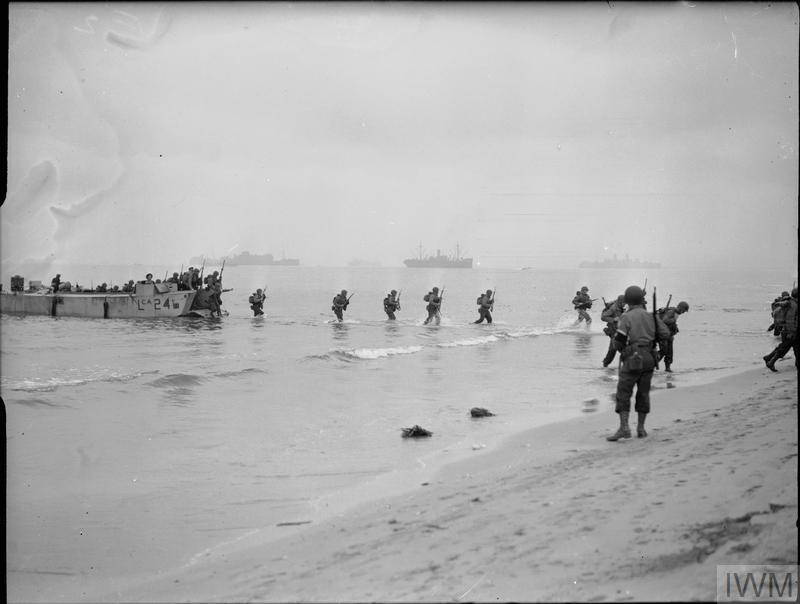Concerning the Dieppe Raid by A. G. Kirby (RCNVR, Combined Ops)
The Raid (Aug. '42) was Followed by Operation TORCH (Nov. '42)

Photo Credit: DIEPPE, DIEPPE by Brereton Greenhous
Introduction:The account related to the Dieppe raid by Al Kirby - as found in a book of much significance and interest in this latest series of posts, i.e.,
Combined Operations by Londoner Clayton Marks - is relatively lengthy, coming in at 24 pages. However, the account is accompanied by zero photographs, when 1000s exist. And if I could ask Mr. Marks, the editor of all, and author of much of his book, about the lack of photos he might simply say, "Al didn't give me any."
And Al had the opportunity. He met with Clayton on more than one occasion, I am sure. Below we see both men in a small group, each member dedicated to the job of collecting and distributing veterans' stories in various books:
Five significant books were produced by four of the Canadian men above.
Photo taken in the backyard of the home of Clayton Marks, London ONT.
Back, L - R: 'Gash', Clayton, and David Lewis (David wrote and
collected stories for St. Nazaire to Singapore (two volumes)
Front L - R: Doug and Al (full names are w top photo)
There have been a few times that photographs re Al Kirby (RCNVR, Combined Operations) have been shared on this site, and I will do so again here as I encourage readers to look at his Dieppe record found in
Combined Operations, pages 38 - 62:
Photo Credit: St. Nazaire to Singapore: The Canadian Amphibious War
1941 - 1945, Volume 2, Page 390
Excerpt from Al Kirby's account frpm Combined Operations, Page 45
Excerpts can also be found in DIEPPE, DIEPPE
by B. Greenhous. Photo of book's front cover. GH
Doug Harrison (left) and Al Kirby, on guard duty, likely in early 1942
at HMS Northney (1 - 4), on Hayling Island, or later at another camp
Photo Credit: St. Nazaire to Singapore: The Canadian Amphibious War
1941 - 1945, Volume 1, Page 194
Al Kirby, centre (w big laugh), returning to Canada aboard RMS Aquitania,
December, 1943 with several other Canadians in Combined Ops; e.g., Joe
Watson (Simcoe) fixing his collar, and Doug Harrison (behind Joe W.)
In Kirby's account, we learn of an unheralded Canadian in Combined Ops who was killed during the Dieppe Raid. Joe McKenna was from Souris, PEI and I have no picture of him, unfortunately, and have been unable (so far) in connecting with family members or relatives.
And following D. Ramsey's letter is a map from Combined Operations revealing some of the landing beaches where Canadians in Combined Ops served (with American troops) during Operation Torch (the Allied invasion of North Africa), beginning November 8, 1942:
The beaches east and west of Oran were just part of the landings. Page 66
Map inside the front cover of The Watery Maze reveals, left to right, the
Western, Central and Eastern Landing Forces; dates from Nov. 8 - 12
Below are two of my favourite photographs related to Canadians in Combined Operations serving during Operation TORCH. My father not only mentioned the TORCH landings in his memoirs but was caught "just doing his job" by an RN Photographer on November 8, 1942:
Troops and ammunition for light guns being brought ashore from a landing craft
assault (ramped) (LCA 428) on Arzeu beach, Algeria, North Africa, whilst another
LCA (LCA 287) approaches the beach. Operation 'Torch', November 1942.
[Canadian sailor, centre, knee-deep in water, is Doug Harrison, RCNVR]
Photo Credit: Royal Navy Photographer Lt. F. A. Hudson, (IWM)
Caption: American troops landing on the beach at Arzeu, near Oran, from a
landing craft assault (LCA 26), some of them are carrying boxes of supplies.
Photo Credit: Royal Navy Photographer Lt. F. A. Hudson, (IWM)
More photographs from the Imperial War Museum's extensive files follow:
A12647 American troops manning their landing craft assault from a doorway
in the side of the liner REINA DEL PACIFICO. Two of the landing craft are
numbered LCA 428 and LCA 447. Hudson, F A (Lt), Imperial War Museum
A12648 American troops exiting their landing craft assault on the beach
at Arzeu, near Oran. Some of the ships of that convoy can be seen in the
distance. Photo Credit: Hudson, F A (Lt), Imperial War Museum (IWM)
A12658 American soldiers tending to a wounded native soldier on the
beach at Arzeu. Photo Credit: Hudson, F. A. (Lt), Imperial War Museum
A12672 American troops landing light guns on Arzeu beach.
Photo: Hudson, F A (Lt), Imperial War Museum (IWM)
For an extensive number of photographs concerning the invasion of North Africa - as stored in the archives of the Imperial War Museum -
please click here IWM.
My father Doug Harrison writes the following about the landings in Arzeu:
My group went through much more training at H.M.S. Quebec and then we entrained for Liverpool. Prominent pub was The Crown in Wallasey. We left Greenock in October, 1942 with our LCMs aboard a ship called Derwentdale, sister ship to Ennerdale. She was an oil tanker and the food was short and the mess decks where we ate were full of eighteen inch oil pipes. The 80th and 81st flotillas, as we are now called, were split between the Derwentdale and Ennerdale in convoy, and little did we know we were bound for North Africa....
At Anchor. Photo Credit: J. Hall, Gourock, Scotland. FL11110, IWM
We had American soldiers aboard and an Italian in our mess who had been a cook before the war. He drew our daily rations and prepared the meal (dinner) and had it cooked in the ship’s galley. He had the ability to make a little food go a long way and saved us from starvation. Supper I can’t remember, but I know the bread was moldy and if the ship’s crew hadn’t handed us out bread we would have been worse off....
In the convoy close to us was a converted merchant ship which was now an air craft carrier. They had a relatively short deck for taking off, and one day when they were practicing taking off and landing a Swordfish aircraft failed to get up enough speed and rolled off the stern and, along with the pilot, disappeared immediately. No effort was made to search, we just kept on.
One November morning the huge convoy, perhaps 500 ships, entered the Mediterranean Sea through the Strait of Gibraltar. It was a nice sun-shiny day... what a sight to behold.
An Allied convoy, escorted by sea and air, plowed through the seas toward
French N. African possessions near Casablanca, French Morocco, in Nov., 1942,
part of Operation Torch, the large British-American invasion of French N. Africa.
Doug Harrison continues:
On November 8, 1942 the Derwentdale dropped anchor off Arzew in North Africa and different ships were distributed at different intervals along the vast coast. My LCM had the leading officer aboard, another seaman besides me, along with a stoker and Coxswain. At around midnight over the sides went the LCMs, ours with a bulldozer and heavy mesh wire, and about 500 feet from shore we ran aground. When morning came we were still there, as big as life and all alone, while everyone else was working like bees.
There was little or no resistance, only snipers, and I kept behind the bulldozer blade when they opened up at us. We were towed off eventually and landed in another spot, and once the bulldozer was unloaded the shuttle service began.
For ‘ship to shore’ service we were loaded with five gallon jerry cans of gasoline. I worked 92 hours straight and I ate nothing except for some grapefruit juice I stole.






















































